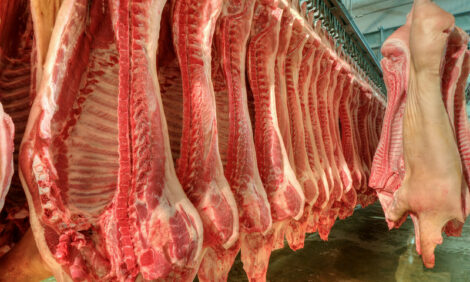



Slip in 2016 Pork Retail Demand Indexes
US - From an economist’s perspective, a demand index is a depictions changes over time compared to a base period (i.e. shifts in the demand relationship). Graphically, demand is a curve with prices on the vertical axis and quantities on a horizontal axis, according to the Steiner Consulting Group.A major assumption in calculation the index is that the base period relationship between price and quantity is unchanged (for the economist readers, the own-price elasticity is constant over time). For more background on the logic of a retail beef demand index, see the short summary by Dr. Tonsor at Kansas State University done in 2010, which is available here.
Interpreting retail meat demand indexes is rather straight forward. For example, an index value of 79 in 2012 means that relative the base year of 1990 (which has an index of 100) that the retail beef price (adjusted for inflation) was 21 per cent below what would have occurred if demand remained at 1990’s base level. That is a reduction in demand, economically.
Today, we include two annual retail price demand index graphics, one each for beef and pork. Before we discuss those, these indexes should be interpreted with a bit of caution. Beyond the significant fixed elasticity assumption noted above, the retail prices are calculated by USDA’s Economic Research Service (ERS) from a limited scope of meats collected from grocery stores for the purpose of calculating the overall US Consumer Price Index by the Bureau of Labor Statistics. Those price data are not collected to provide anything close to a full-scale assessment of demand.
Second, without going into detail, the quantity data have some limitations and assumptions, too. So, to use an analogy from weather, this type of index is more like measurement from a barometer rather than the detailed scale of a thermometer to understand what is like outside and what has been happening. Evaluation should focus on direction of change and not absolute index levels. Of course, beef and pork demand are simplifications as consumers not only buy product from grocery stores but also from restaurants and they eat individual items like hamburger and not generic “beef”.

Comparing the history of retail demand indexes for beef and pork since 1990, it’s clear that beef has moved over a wider range and that the economic environment is important. Note, for example, that the recent bottom in the beef demand index is tied to the last recession. From a historical perspective, the decline in beef demand from 1990 through 1997 was largely attributable to chicken taking market share away from beef.
For calendar year 2016, both beef and pork retail demand indexes slipped compared to 2015’s. Still, demand was strong compared to levels posted since the early 1990’s. For both beef and pork, the nature of the retail price series calculated by ERS may have overstated the 2015 indexes some. In an aggregate sense, both beef and port items faced considerable competition from chicken in 2016, which may have contributed to the slight negative shift in demand last year.









